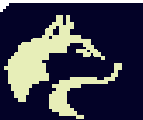Team:Washington/Gram Positive/Build
From 2010.igem.org
Contents |
Generating Mutant CapD
Mutate DNA
Order Oligonucleotides
After we come up with the desired mutant proteins designs, we employ the method Kunkle Mutagenesis to generate our mutant proteins (Kunkel Mutagenesis protocol). Kunkel is a site-directed mutagenesis, requiring knowledge of wild-type sequences. After the desired mutation is modeled using Foldit, we order a mutation's antisense oligonucleotides from [http://www.idtdna.com/ Integrated DNA Technologies].
Generate ssDNA
In order to anneal oligos, CapD expression gene ssDNA must be obtained by transforming CJ236 cells with a plasmid containing the CapD gene. These cells use Uracil instead of Thymine, and are unable to destroy Uracil containing DNA.
Annealing to ssDNA
Received oligonucleotides lack activity-inducing phosphates. Adding phosphates by kinasing readies them for annealing to ssDNA. The oligonucleotide binds to a specified location on the ssDNA except where the mutation is. This creates an area where the oligonucleotide will not bond to the template ssDNA.
Synthesize the Plasmid
Using DNA polymerase, the rest of the missing strand is synthesized. Finally the area in the plasmid where the mutation is fixed because the former ssDNA strand that contains uracil is destroyed by the cell we transform our mutant plasmid into. Since the cell uses the other strand (the strand with the Oligonucleotides) to fix the DNA, the result is a complete mutant plasmid. Plasmids are then sent for sequencing by [http://www.genewiz.com/ GENEWIZ] to confirm mutations.
Grow Protein
To grow and harvest our protein, we used two different protocols: small scale and large scale. The concepts described below are the same for both protocols.
Protein Production
By introducing Isopropyl β-D-1-thiogalactopyranoside (IPTG), an allolactose mimic, we induce E. Coli to produce our protein. IPTG binds with the lac inhibitor protein and activates the lac operon, turning on the CapD gene and causing production of our mutant protein.
Harvest Protein
Lyse cells
The supernatant (media) from spinning down the cells is emptied and the cells at the bottom are lysed open. The result is a slurry containing all the cell’s proteins and DNA. Lysis is then spun down and the supernatant, containing all the proteins, is collected. Among the proteins is CapD.
Purify proteins
To purify the protein, we run the supernatant collected from lysis through a column containing TALON resin cobalt beads. CapD's designed histidine tags bind to the beads, whilst everything else flows through. Finally, the CapD is eluted with imidazole, a histidine without a backbone, which outcompetes the affinity to bind. The result is our purified mutant CapD.
 "
"




